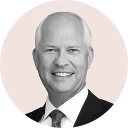How undervaluation, innovation, and global shifts are aligning in favor of EM equities
After a decade of lagging behind developed markets, emerging market (EM) equities are finally showing signs of a strong comeback. In this article, we look beyond the headlines and explore the structural, cyclical, and geopolitical shifts that suggest EM equities may not only sustain this rebound—but potentially outperform their developed-market peers over the next decade.

A Sharp Reversal: The Early Signals of a Regime Shift
So far in 2025, emerging markets have returned over 18%—more than double the S&P 500. This marks a decisive break from a decade-long stretch of underperformance, during which EM stocks gained 57% compared to a 238% surge in the S&P 500.
But valuation tells the real story. EM stocks are currently trading at roughly half the valuation of US stocks:
- Forward P/E: 12.7
- Dividend yield: 2.6%
- Price-to-book: 1.8
- Price-to-sales: 1.5
- PEG ratio: 1.1 (vs. 2.0+ in the US and Europe)
In other words, EM stocks offer comparable or even superior growth potential—at significantly lower prices. That valuation gap, while not a short-term catalyst on its own, sets the stage for long-term outperformance.
Structural Tailwinds: A Perfect Storm of Secular Shifts
Several macro forces are aligning in favor of emerging markets:
- Dollar Weakness: A dovish tilt in US policy and rate expectations is weighing on the dollar. Historically, periods of dollar depreciation have coincided with outperformance in EM assets. As 13D Research notes, “Dollar weakness bolsters the economies of US trading partners and Emerging Markets.”
- Rising Global Influence: The US share of global GDP has fallen from 35% to 25% since Bretton Woods. Meanwhile, emerging market nations are strengthening their share through trade diversification, higher productivity, and policy reforms.
- China’s Pivot: China is deepening domestic consumption, moving up the value chain, and incentivizing savers to shift from bank deposits (near-zero yields) to equities (4%+ dividend yields). Consumer spending is already up 5% YoY in 2025.
Countries like Indonesia are benefiting directly through strategic partnerships, such as Chinese-led investments in EV battery manufacturing, which add value to local resources like nickel. The expansion of BRICS and intra-regional trade points to a multipolar world no longer tethered to a US-centric model.
The China Factor: Headwind or Hidden Catalyst?
China represents ~30% of most EM indices—a fact that has driven some investors to EM ex-China strategies. Yet Chinese equities may be one of the most undervalued assets globally.
- China’s GDP is growing at 5.3%, with per capita disposable income rising in tandem.
- Profit margins in Chinese companies have hit record highs, thanks to a government crackdown on excess supply and inefficient pricing.
- Valuations are compressed: The KWEB ETF (China tech) now trades at <0.2x the valuation of the Magnificent 7 in the US.
- Shareholder returns are improving: Alibaba, Baidu, JD.com, and NetEase are initiating dividends and stock buybacks.
AI innovation is accelerating. China houses 50% of global AI researchers and dominates in EV adoption, with 10 million EVs sold in 2025—almost 40% of total new vehicle sales. For long-term investors, this signals a pivot toward shareholder value, innovation leadership, and profitability that has yet to be priced in.
The Emerging Tech Reset
AI represents a global economic reset—and emerging market nations are positioning themselves at the forefront. Countries like Brazil have national AI strategies. India, Vietnam, and Poland are developing high-end engineering talent and infrastructure to compete on a global scale.
As structural barriers to innovation fall, emerging market nations are poised to lead across sectors like:
- Healthcare
- Education
- Agriculture
- Financial services
- Renewable energy
The next wave of technology leaders may well emerge from outside Silicon Valley.

Commodities, Crypto, and Capital Flows: Additional Catalysts
Two overlooked factors could amplify EM outperformance:
Commodity Strength
Industrial metals and raw materials are on the rise, fueled by infrastructure demand, energy transition, and global re-industrialization. Since many emerging market nations are commodity-rich, rising prices tend to correlate strongly with EM equity performance.
Stablecoin-Driven Liquidity Boom
The recently passed Genius Act in the US could spark a new era of “free banking” through Stablecoins backed by US Treasuries. These digital assets can expand global dollar liquidity, lower borrowing costs, and create favorable capital conditions for emerging market borrowers. A weak dollar combined with abundant liquidity provides tailwinds for emerging market debt and equity alike.
Risk Factors to Monitor
No investment thesis is without risk. Key challenges include:
- Political and policy instability in select regions
- Currency volatility and rising debt burdens
- Global interest rate shocks or commodity crashes
- Environmental and urbanization pressures
That said, many emerging market nations are improving transparency, governance, and institutional strength—building resilience that may reduce the impact of these shocks over time.
Conclusion: The Case for a Strategic Reallocation
EM equities offer a rare combination of:
- Compelling valuations
- Strong demographics
- Economic and technological catch-up
- Geopolitical realignment
- Rising commodity leverage
- Financial innovation
Despite accounting for 60% of global GDP, EMs represent just 3–4% of US investor portfolios. By contrast, investors have more exposure to Nvidia than to all emerging markets combined. For forward-looking investors, this misallocation represents not just risk—but opportunity.
This imbalance creates a rare window for strategic reallocation. As global power shifts, technology leadership broadens, and capital flows realign, emerging markets are no longer just a diversification play—they’re becoming a central engine of global growth. The combination of undervalued assets, improving fundamentals, and structural tailwinds positions EM equities as one of the most compelling long-term investment opportunities of the decade. For investors willing to look beyond short-term volatility, the question isn’t if to increase exposure—but how soon.
The InFlextion AI platform highlights these strategies and funds that will benefit from the growth in Emerging Markets:
- Driehaus Emerging Markets Growth
- Wasatch Emerging Small Cap
- Redwheel Global Emerging Equity
- Martin Currie Emerging Markets
- Harding, Loevner Emerging Markets Portfolio
- Janus Henderson Emerging Markets
- Thornburg Developing World
- Federated Hermes Emerging Markets Equity
- PGIM Jennison Emerging Markets Equity Opportunities
- WCM Focused Emerging Markets
Download the article
Flextion is a breakthrough platform for evaluating fund strategy returns, helping investors identify managers at a pivotal turning point—those poised to outperform after a period of underperformance. Designed by seasoned portfolio managers, Flextion bridges the gap between “clock time” and “market time,” empowering investors to unlock long-term value and uncover hidden performance potential.


